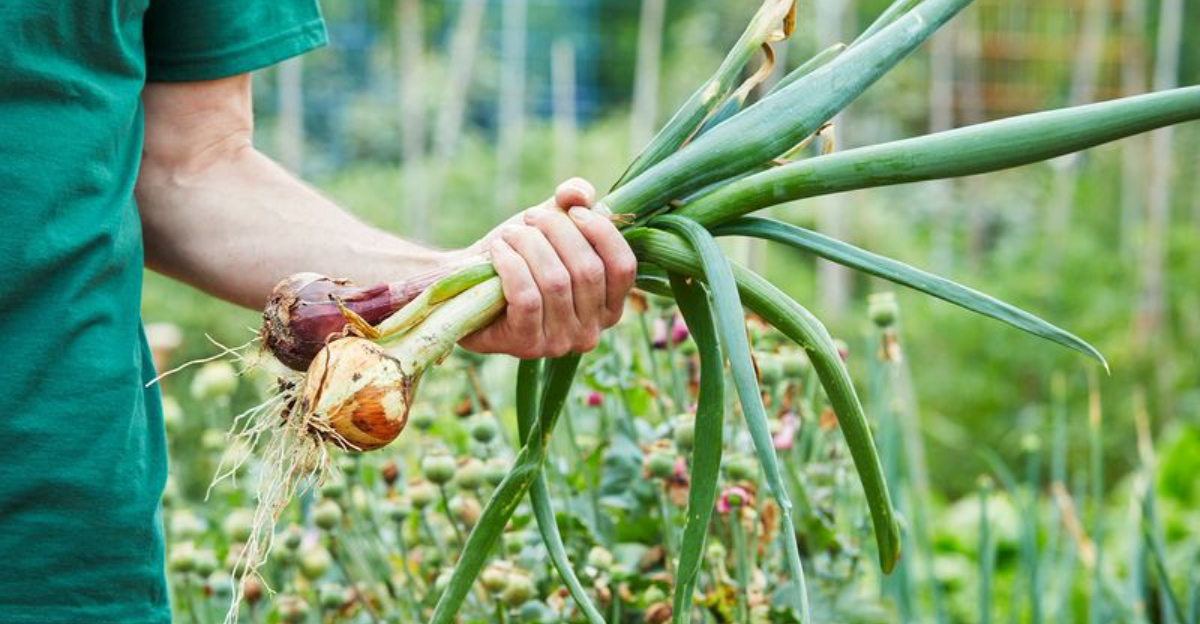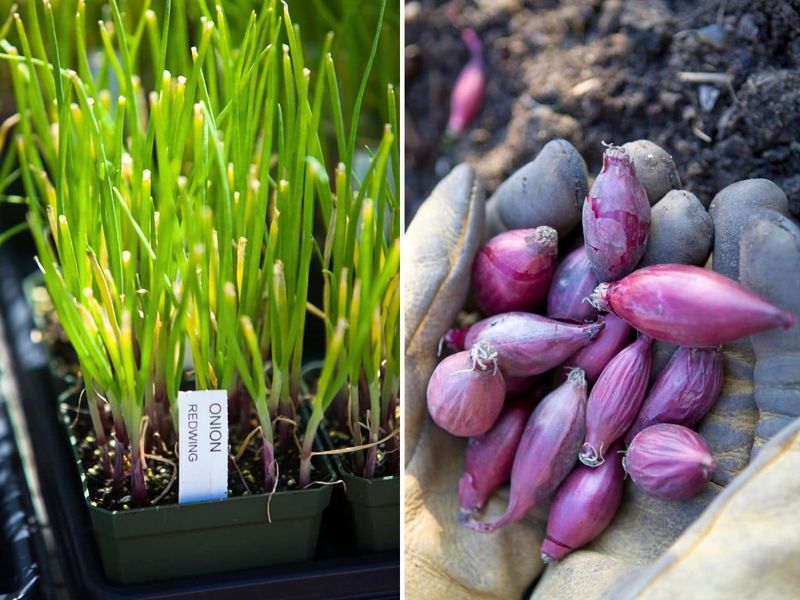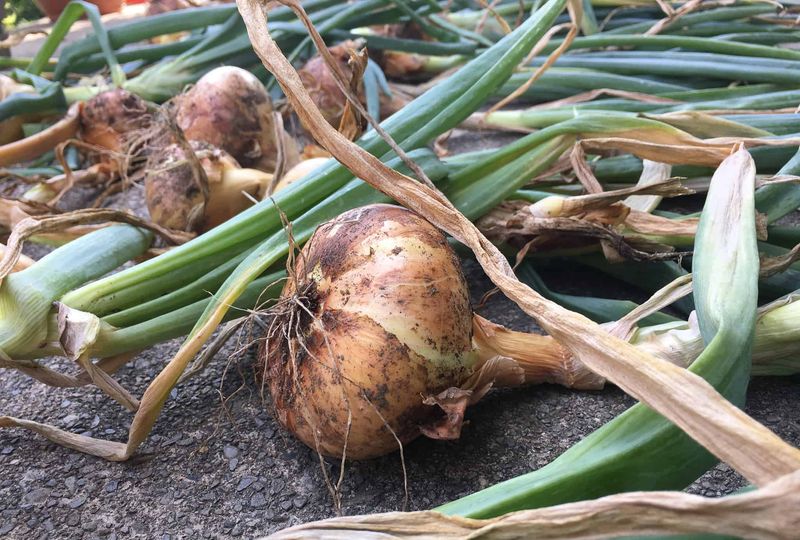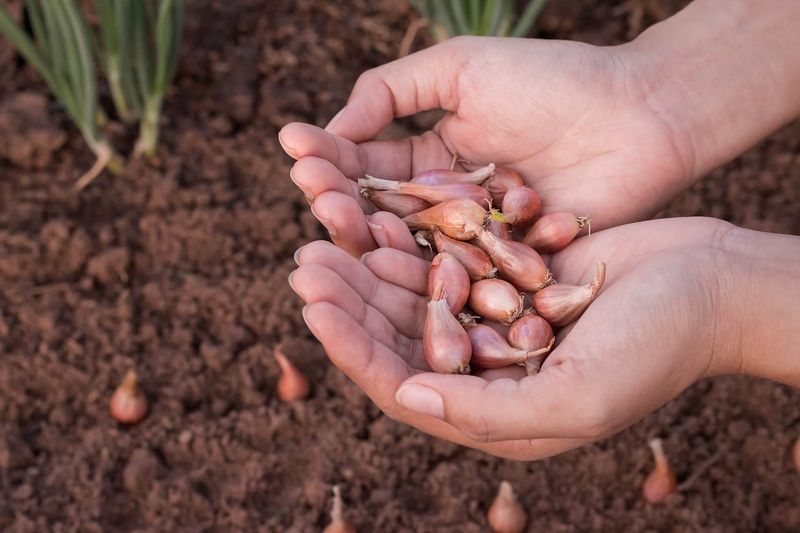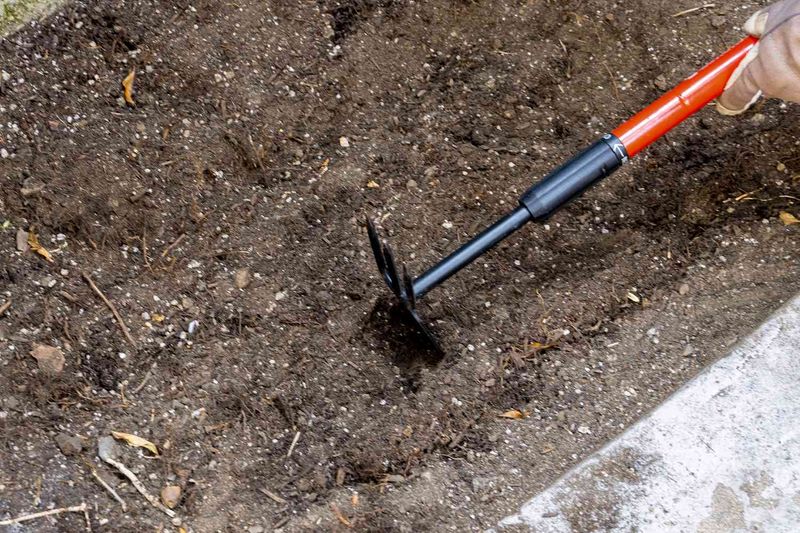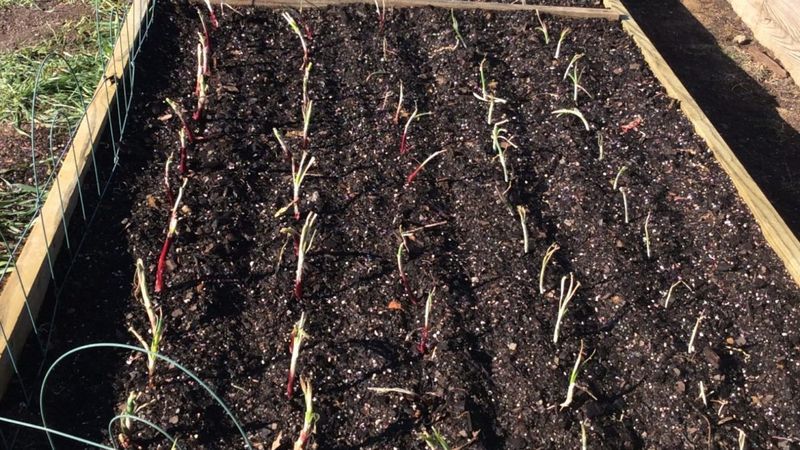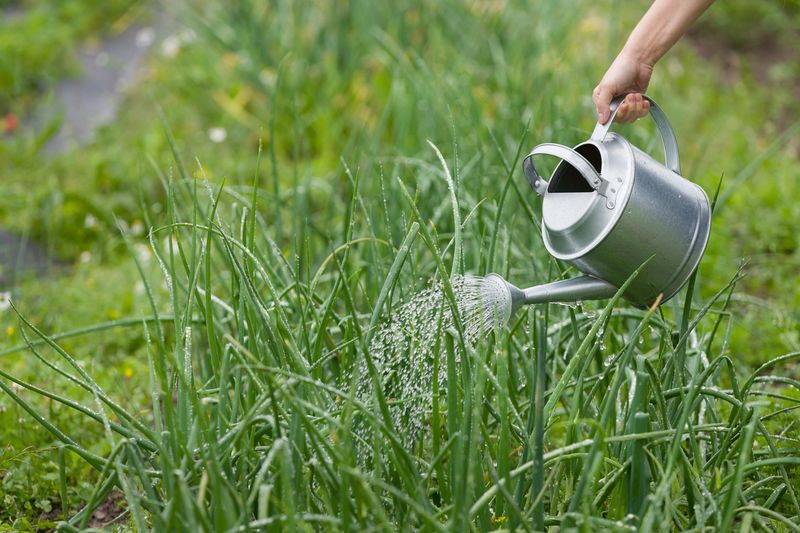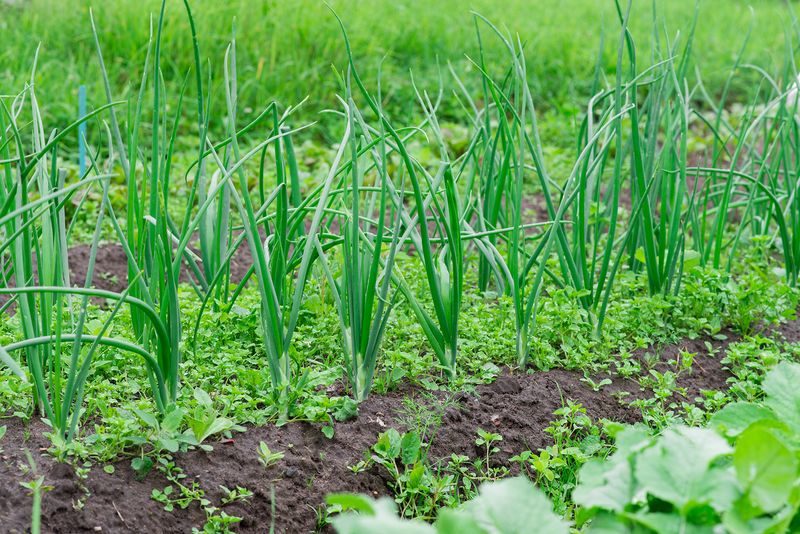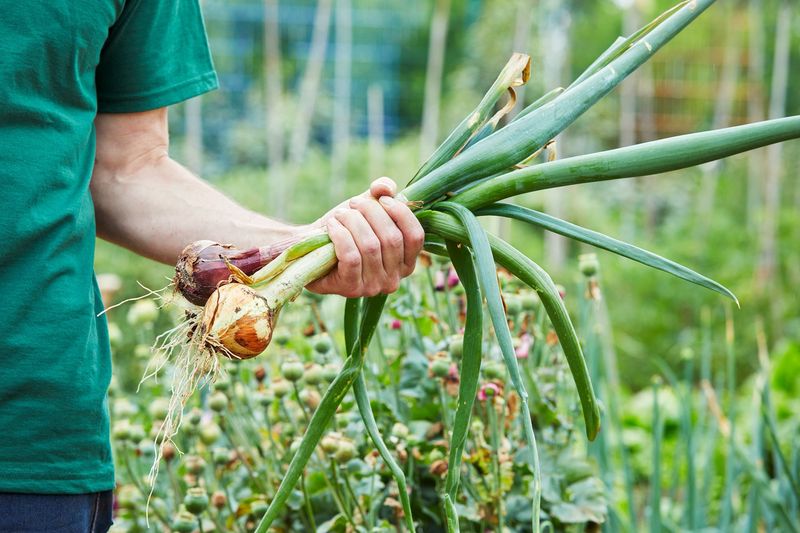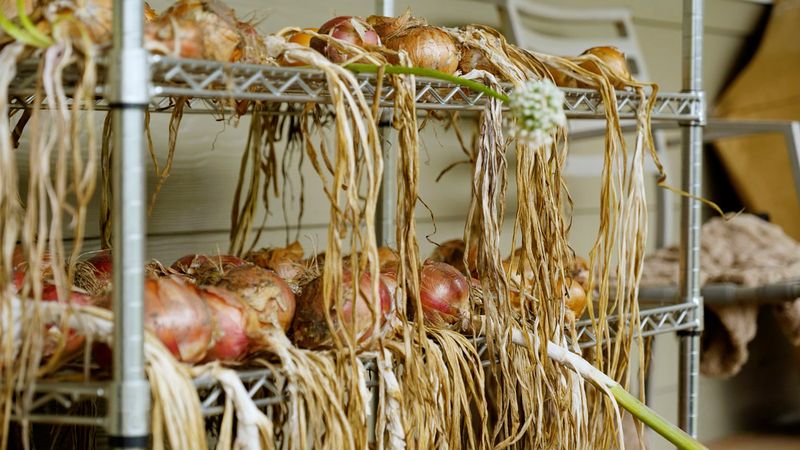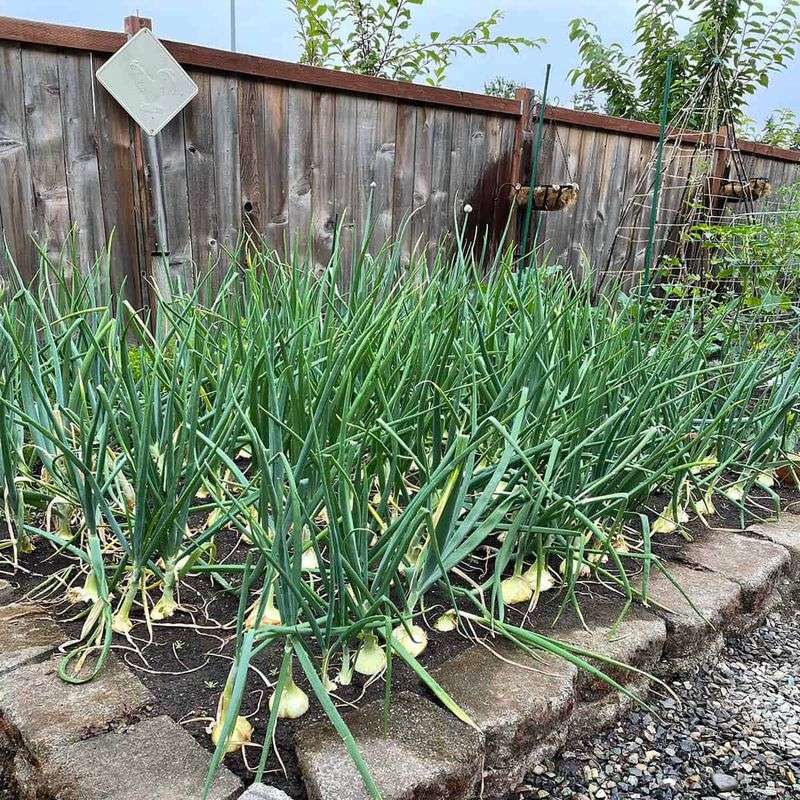Exploring the choice between onion seeds and onion sets can significantly impact your harvest. This guide delves into the pros and cons of each, providing essential tips for optimum growth.
Learn how to select the best type for your region, prepare your soil, and ensure your onions thrive. From planting to curing, these insights will equip you with the knowledge needed to cultivate healthy, bountiful onions.
1. Onion Seeds vs. Onion Sets: What’s the Difference?
Onion seeds and sets each offer unique benefits. Seeds, taking between 90 to 120 days to mature, allow for a broader selection and are suitable for long-term storage onions.
In contrast, sets mature faster, in about 60 to 80 days, and are easier to plant, though they carry a higher bolting risk. Sets are typically costlier but simplify planting. On the other hand, seeds are budget-friendly, though they require more time and attention.
Selecting between them depends on your gardening goals, preferences, and local growing conditions, ensuring a successful onion harvest.
2. Choosing the Right Onion Type for Your Region
Selecting the right onion type is crucial for a bountiful harvest. Onions are categorized by daylight needs: short-day, long-day, and day-neutral.
Short-day onions thrive in southern regions with mild winters, while long-day onions are perfect for northern areas with extended daylight in summer. Day-neutral onions are versatile, adapting to a variety of climates.
Understanding your region’s climate and daylight patterns helps in choosing the appropriate type, ensuring robust growth and development. This decision maximizes your harvest potential, catering to specific environmental conditions.
3. Selecting the Best Planting Method
Deciding between seeds and sets for planting involves considering timing and convenience. Seeds should be sown indoors 8 to 10 weeks prior to the last frost, allowing them to establish before outdoor conditions improve.
Onion sets can be planted directly into the ground as soon as the soil is workable, offering a quicker start. Both methods demand well-prepared soil and correct spacing to foster healthy onion growth.
Matching your planting method to your schedule and resources ensures successful seedlings and mature plants, leading to a fruitful onion harvest.
4. Preparing the Soil for Onions
Proper soil preparation is vital for growing thriving onions. Onions prefer loose, well-draining soil rich in organic matter, with an ideal pH between 6.0 and 7.0.
Before planting, incorporate compost or aged manure to enrich the soil, promoting healthy root and bulb development. This preparation ensures the soil structure supports onion growth, improving moisture retention and nutrient availability.
By investing time in preparing your soil, you lay the foundation for a successful onion crop, reducing the risk of common growth issues and enhancing overall plant health.
5. Spacing and Depth for Proper Growth
Correct spacing is crucial to maximize onion growth. Onion seeds should be sown about ¼ inch deep, while sets are planted with tips slightly exposed above the soil. Space onions 4 to 6 inches apart within rows, with rows 12 to 18 inches apart.
This arrangement prevents competition for resources, allowing bulbs to expand fully. Adequate spacing improves air circulation, reducing the risk of disease and promoting healthy growth.
By adhering to these depth and spacing guidelines, you ensure that your onions develop to their full potential, yielding a plentiful harvest.
6. Watering and Feeding Your Onions
Consistent watering is key to thriving onions, but they dislike soggy conditions. Regular watering, particularly during dry periods, is essential. Onions benefit from a high-nitrogen fertilizer applied every few weeks to encourage vigorous growth.
However, once bulbs start forming, it’s important to cease fertilization to prevent affecting their quality. Balancing moisture and nutrients ensures healthy onions that reach their full size and flavor potential.
By managing watering and feeding effectively, you promote robust plant development and minimize issues related to overwatering or nutritional deficiencies.
7. Managing Weeds and Pests
Weed and pest management is vital for healthy onion crops. Weeds compete for nutrients, so mulching helps suppress them. Common pests like onion maggots and thrips can damage crops, but they are manageable through crop rotation, row covers, or insecticidal soap.
These strategies protect onions, ensuring they receive ample nutrients and remain pest-free. By proactively managing these threats, you maintain the health of your onion plants, reducing stress on them and promoting better growth and yields.
These preventive measures are key to a successful onion harvest.
8. Knowing When to Harvest Onions
Timing your onion harvest is crucial for quality. Onions are ready when their tops yellow and fall over. Carefully lifting them from the soil prevents damage. Once harvested, allow onions to dry in a warm, well-ventilated area for several days before the curing process.
Proper harvesting ensures onions maintain their flavor and storage quality. Observing your onions and harvesting at the right time protects your investment, ensuring that they are at their peak for consumption or storage.
This timing is essential for maximizing the quality and longevity of your onion crop.
9. Curing and Storing Onions Properly
Curing onions is essential for long-term storage. Once harvested, spread them in a shaded, airy place for 2 to 3 weeks. This process dries the outer layers, preventing rot. After curing, trim excess roots and tops, and store onions in a cool, dry area with good ventilation.
Proper storage preserves their flavor and extends shelf life. By following these steps, you ensure your onions remain fresh and ready for use over an extended period.
This careful handling from harvest to storage is key to enjoying homegrown onions throughout the year.
10. Growing Great Onions Year After Year
Continual success with onions involves strategic planning and maintenance. Rotating onions with other crops prevents disease buildup and nutrient depletion, vital for long-term health.
Enhancing soil with compost keeps it nutrient-rich, supporting robust growth. Additionally, selecting varieties suited to your climate enhances resilience. By incorporating these practices, you foster a healthy growing environment, ensuring productive onion crops annually.
This proactive care not only improves yields but also enhances the quality of your onions, allowing you to enjoy bountiful harvests each year.
